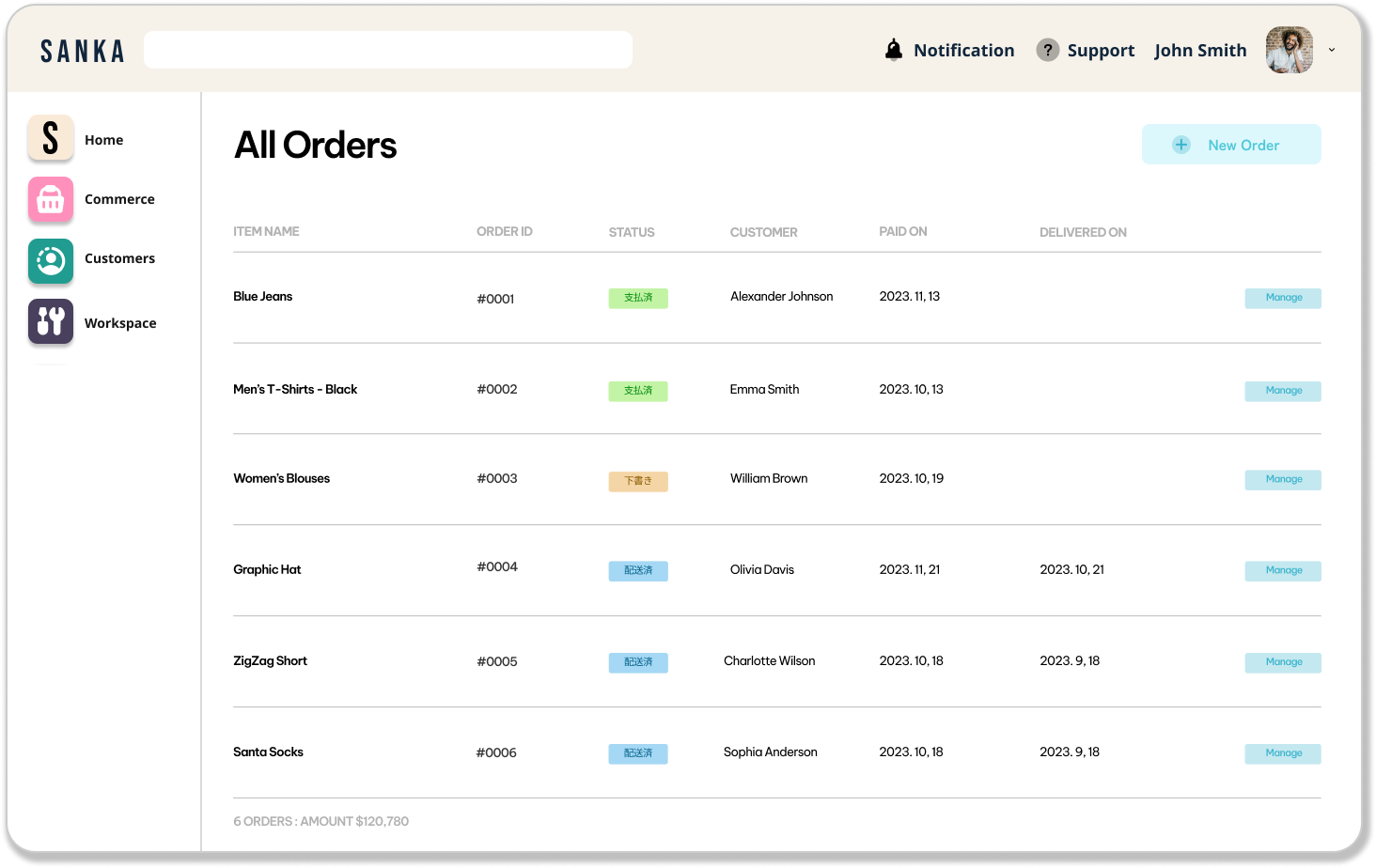Introduction
In the bustling world of online commerce, efficiency and customer service are key to accelerating business growth.
One way to boost both these aspects in one stroke is by adopting automation.
This beginner-friendly guide dives deep into the world of e-commerce automation - what it is, its benefits, and how you can incorporate it into your business operations.
What is E-Commerce Automation?
Automation, in its simplest form, is about leveraging technology to perform tasks that would otherwise require human intervention.
Applying this concept to the realm of e-commerce, we land on a powerful tool that can profoundly streamline and optimize various functions in your online business.
E-commerce automation can address a multitude of tasks, including order processing, inventory management, customer service, and even marketing campaigns.
By automating routine tasks, businesses can free up time, streamline processes, mitigate human error, and scale faster and more efficiently.
Benefits of E-Commerce Automation
#1 Increased Operational Efficiency
One of the standout benefits of automation is improving operational efficiency. Manual tasks that are time-consuming or prone to error, such as inventory management or order processing, are streamlined by automation.
Consider the example of a clothing e-commerce business that maintains an inventory of thousands of items.
Manually updating inventory counts after each sale can be tedious and error-prone.
But with automation, the inventory levels can be updated in real-time after each purchase, significantly reducing the human effort involved and ensuring the accuracy of inventory data.
#2 Enhanced Customer Satisfaction
Research by Hubspot shows that 90% of customers rate an "immediate" response as important when they have a customer service question.
Automation can make 24/7 customer service a reality through chatbots or automated email responses.
Take, for instance, an online bookstore that receives hundreds of daily customer queries ranging from book availability to order status.
Deploying a chatbot can provide instant responses to common queries round-the-clock, ensuring customers always get timely responses.
#3 Better Marketing Efforts
With automation tools, businesses can segment customers into different groups based on their interaction pattern, purchase history, and more.
Segmentation allows for personalizing marketing messages and offers, which amplifies customer engagement and conversion rates.
For example, an online electronics store can segment customers who've shown interest in laptops but not made a purchase.
The store can then send targeted offers or helpful resources about laptops to these customers.
#4 Improved Scaling Capacities
Automation simplifies scalability for e-commerce businesses. As your business grows, managing increasing order volumes and customer interactions manually can become challenging.
Automation helps handle this increased workload without adding substantial operational complexity or overheads.
For instance, as an online cosmetic shop expands from a regional to a national scale, order volumes will increase, as will customer queries.
Automated processes, such as order processing, shipping coordination, and customer support, would allow the business to efficiently handle this increased workload.
#5 Cost Savings
According to a report by Capgemini, automation can lead to cost savings in operational expenditures of up to 60%.
It eliminates the need for human action in many routine tasks, reducing the livelihood of costly errors and saving workforce expenditure.
For example, consider an online grocery store manually processing returns. The room for error is high, leading to potential customer dissatisfaction and increased costs.
Automating the return process would ensure efficient handling, reducing errors, time, and potential financial losses.
E-commerce Automation in Different Areas
E-commerce automation can be implemented in various areas of your online business for improved efficiency and customer satisfaction.
Inventory Management
Automation ensures you maintain optimal inventory levels, avoiding stock-outs or overstocking.
It also streamlines processes, such as updating inventory counts in real-time, tracking sale trends, and automatically reordering products when stocks run low.
Imagine an online bookstore using automation for inventory management. The moment a book’s stock level falls below a predefined threshold, the system automatically places an order with suppliers, ensuring continuous availability without manual intervention.
Order Processing and Fulfillment
Order processing involves several steps, from receiving an online order to preparing it for shipment.
Automation streamlines this entire process, reducing the time from order to delivery and minimizing human errors.
For an apparel e-commerce site, an automated order processing system could instantly allocate an order to the nearest fulfillment center with the inventory in stock, select the optimal shipping method based on delivery time and cost, and generate shipping labels, all without human intervention.
Marketing and Customer Relationship Management (CRM)
In the sphere of marketing and CRM, automation allows for personalized communication based on customer behavior, interests, and past purchases.
It can automate email campaigns, social media postings, and even personalized product recommendations.
A beauty products e-commerce company could use automation to send a birthday email to its customers with a special discount code.
The system can also trigger an email sequence for cart abandonment, enticing customers to complete their purchase with a limited-time offer.
Customer Service
Automation in customer service primarily involves the use of chatbots and automated responses to handle customer inquiries.
This ensures immediate assistance is available to customers, enhancing their shopping experience.
For example, n electronics e-commerce platform utilizes a chatbot that can answer FAQs, track orders, and even assist with returns or exchanges.
For more complex queries, the chatbot can escalate the issue to a human customer service representative.
Fraud Detection
In e-commerce, fraud detection is crucial for protecting both the business and its customers.
Automation tools can analyze buying behavior, identifying patterns that may indicate fraudulent activity and flagging them for review.
An online gaming marketplace utilizes an automated system to monitor and analyze user transactions.
Suspicious activities, such as multiple high-value purchases within a short period or the use of many different credit cards, are automatically flagged for further investigation.
The Best Practices for Implementing E-Commerce Automation: A Practical Guide
Implementing e-commerce automation can be a game-changer for your online business.
However, to truly reap its benefits, it's essential to adopt best practices that ensure a smooth and effective implementation.
Here, we delve into the best practices and practical strategies for implementing e-commerce automation in your business.
1. Define Clear Objectives
Before deploying any automation solutions, it's crucial to understand what you want to achieve.
Are you aiming to improve operational efficiency, enhance customer experience, or boost your marketing efforts?
Each goal will dictate what type of automation you need and help you prioritize where automation can make the most impact.
While setting your objectives, consider factors like which manual tasks demand the most resources, areas facing repeated errors, or processes holding back scaling efforts.
These insights can guide where to implement automation and what improvements to expect.
2. Choose The Right Tools
Understanding your objectives will also help you select the right automation tools. Carefully evaluate different automation platforms.
Consider their features, compatibility with your current systems, scalability, and ease of use.
Many automation tools offer free trials. Make use of these to test the functionality of the software before fully committing.
If possible, get feedback from current users of the software to get a real-world perspective.
Discover the effortless way to supercharge your e-commerce management with Sanka.
Say goodbye to the mundane and manual, and hello to seamless efficiency across product research, marketing, customer service, and order management.
Leveraging a decade of expertise in e-commerce consulting, Sanka tailors dynamic, all-in-one solutions to fit your unique business needs.
Embrace the future of e-commerce with Sanka. Start your free trial now!
Elevate your business efficiency, optimize customer satisfaction, and see substantial ROI with the partner that works as tirelessly as you do.
Begin Your Free Trial with Sanka Today!
3. Educate Your Team
While automation tools can handle many tasks, they cannot replace the human touch entirely.
Therefore, it's important to educate your team about the new system, its benefits, and how it integrates into their roles.
This ensures a smooth transition and acceptance of the new processes.
Consider offering team training sessions or workshops. These can be excellent platforms for team members to understand the automation system, raise concerns, and learn how to work with the new system effectively.
4. Start Small and Scale Gradually
Instead of automating all processes at once, start small. Choose one process that could benefit most from automation and start there.
This offers you the flexibility to troubleshoot issues without disrupting your entire operation.
For example, you might begin with automating email marketing campaigns. Once you're confident with this process, move on to other areas like inventory management or customer service.
5. Constantly Monitor and Optimize
Implementation does not end with deployment. You need to continuously monitor performance to ensure the tools are delivering the expected outcomes. You can then optimize the system for better results.
Leverage analytics to measure the effectiveness of your automation strategies. Monitor key metrics tied to your objectives to inform optimization and adjustments.
6. Ensure Security
E-commerce automation often involves customer data, so ensuring data security is crucial.
Choose a tool that complies with data protection laws, employ strong access controls, and encourage regular software updates.
Implement a robust data backup and recovery plan. This serves as a safety net if data gets lost or systems are compromised.
7. Offer a Personal Touch
Though automation can handle many tasks, never lose sight of the importance of a personal touch in customer interaction.
For instance, while you can automate email responses, always offer customers an option to reach out for more personalized service or escalations when needed.
Popular E-Commerce Automation Tools

Sanka
There are plenty of e-commerce automation tools available to help businesses grow and improve efficiency.
Among these options, our first choice is Sanka. Sanka offers an outstanding suite of automation features designed to simplify routine tasks and optimize your e-commerce business.
With its user-friendly interface, Sanka allows businesses to create custom workflows and integrations with popular e-commerce platforms.
Some key features of Sanka include:
- Inventory Management: Automatically sync inventory levels across multiple sales channels, reducing the risk of overselling.
- Order Processing: Automate the process of creating and updating orders, streamlining fulfillment and reducing errors.
- Customer Support: Use automated responses and ticketing systems to provide quick and efficient customer service.
Shopify
Shopify is a leading e-commerce tool for inventory and order management. It enables businesses to create, manage, and scale their online stores.
With a vast array of features and integrations, Shopify offers a comprehensive solution for businesses looking to sell products online.
Zendesk
Zendesk is a customer service and engagement platform that offers a suite of tools to help businesses provide exceptional customer support.
With its omnichannel approach, Zendesk enables businesses to connect with customers through multiple channels, such as email, chat, phone, and social media.
Mailchimp
Mailchimp is a powerful marketing automation platform that offers a suite of tools to help businesses grow their e-commerce presence.
With its easy-to-use interface and robust features, Mailchimp enables businesses to create, send, and analyze email campaigns, as well as manage their audience and customer data.
Conclusion
E-commerce automation is a potent tool that can save businesses time, enhance customer experiences, and propel online business growth.
By eliminating time-consuming tasks, reducing errors, and allowing more time for strategic planning, automation is a game-changer in the ecommerce world.
When implemented correctly, with clear goals and continuous optimization, automation can be the catalyst propelling your ecommerce business to new heights.
Begin your automation journey today, and position your ecommerce business for efficiency, growth, and success.
In a world where customer expectations are high and the online marketplace is competitive, can you afford not to automate?
Start your automation journey today and reap the myriad benefits it offers!








